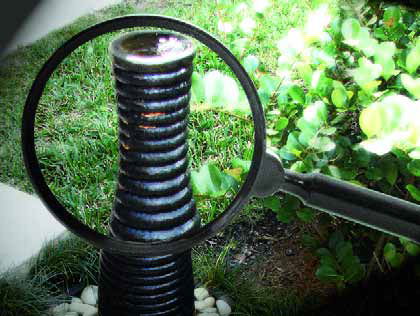Aqua Culture
From its very first issue, this magazine has made one key point over and over again: Soil conditions determine the way a watershape’s shell is constructed; to achieve success in construction, the approach must be established by a competent engineer and followed on site. Through the years, numerous contributors to the magazine have described the process of placing watershapes on hillsides or dealing with soil conditions that lead to differential settlement. So far, however, relatively little attention has been paid to the challenges of working in locations where
One of the greatest epiphanies I’ve ever had as a watershaper came many years ago when I was asked to tell a group of businesspeople what I did for a living. I’d been invited to attend a meeting of the Miami Chamber of Commerce and, as a newcomer, was asked to say a few words about my company and my work. I was to go second: The first speaker was in the carpet-cleaning business and, as I recall vividly, described what he did in such a way that it would’ve been a great cure for insomnia. Standing up after his sleep-inducing performance, I was
One of the clearest trends I’ve seen in watershaping through the past few years involves the use of water in the front spaces of properties, usually along a driveway or close to the main entrance. It’s something I’ve noticed on both the residential and commercial sides of the business, and these projects really do seem to be gaining traction as more time passes. In some cases, they might be the only watershape you’ll find on site. In others, they introduce a presence of water to be echoed
Through the past several months, we’ve heard all sorts of voices discussing the current state of economic affairs – including mine in last month’s “Aqua Culture” column, but, more predominantly, those of representatives of the 24-hour-a-day news media. Anyone who isn’t living in a cave is by now aware that we’re caught up in an economic crisis of global proportions and that the consequences may be dire. We’ve heard that line so often and with such fervor, in fact, that it’s
If you’re paying even the slightest bit of attention to the world at large, you’ve probably heard more than you ever wanted to know about current economic conditions. Indeed, everything that has happened in the past year or so with both our national and the global economy has made it hard for some people to think optimistically about the future. These are perilous times, as some say, and in one way or another, I know we’re all being affected by what’s going on. But that doesn’t seem to be the whole story. In fact,
Growing as a designer is often a matter of seeing things from fresh perspectives. As one with roots in the pool industry, for example, I once thought first about water and about plants and softscape later (if at all). That bias isn't uncommon, of course: I know plenty of landscape architects and designers who think about plants first and only later consider water. It all has to do with our
Several years back, I was in a seminar at the International Pool & Spa Expo when the instructor asked everyone who had an e-mail address to raise a hand. Way back then - it was in the late 1980s or perhaps even the early '90s - using the Internet for communication was a brand-new concept to most people and there were only a few people in the room who lifted an arm. I wasn't one of them, and at that point I had no idea that e-mail and Web sites would ever become such an integral part of my life. At that time, in fact, I didn't think I'd ever need an e-mail address. After all, I
It seems to be a trend: In more and more of the conversations I’ve been having with watershapers, the level of interest in what’s involved in working overseas has really spiked in recent weeks and months. I recall a time several years back when curiosity about overseas work focused on the glamour and excitement of stepping into uncharted territory. Now, however, there’s a certain urgency to the inquiries, and my guess is there are at least three reasons behind it. First, there’s the enduring sense of the prestige and energy that
As watershape designs have become more creative, more competitive and ultimately more valuable to our clients than they once were, it’s natural that we have started paying more attention to protecting our output – what some call our “intellectual property.” This is indeed a large and important issue for many people in our business, virtually to the point where watershapers are now facing the same sorts of concerns that have preoccupied architects and landscape architects for decades. And we’ve caught up with our colleagues at a bad time: With technology being what it is now, the opportunities for






















Plain Silly